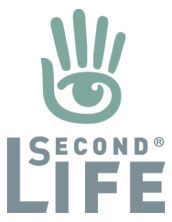Server Deployments – week 14
On Tuesday April 2nd, the Second Life Server (SLS or Main) channel received the interest list update which has been running on the Magnum RC channel for weeks 12-13, together with fixes for the following issues:
- BUG-1779 – Updates for objects that are out of view are delayed for a maximum of 5 seconds, at which point they will be sent
- BUG-1795 – “Agent appears in incorrect position to other agents after being moved by a sim teleporter”
- BUG-1814 – “No object updates from vehicles after some region crossings” – yes, the vehicle region crossing bug fix reaches the Main channel (and should be on BlueSteel and LeTigre following the RC deployments on Wednesday 3rd April).
Deployment release notes.
On Wednesday April 3rd, the Release Candidate (RC) channels received the following updates:
- BlueSteel and LeTigre received the same package as week 13, which includes the new Animation Override LSL capabilities together with the following:
- The changes deployed to the Main channel on Tuesday April 2nd
- A fix for BUG-2134 – “Avatar pre-jump is sporadic”
- Release notes are available (BlueSteel link)
- Magnum received Monty Linden’s new server-side HTTP updates – release notes.
SL Viewer
There has been some activity within the various viewer channels, and the promise of more to come.
The Communications Hub User Interface (CHUI)
CHUI has now reached the viewer release channel with LL issuing viewer 3.5.0.273444. This release includes both the new CHUI UI for conversations, etc., as well as a lot of additional refactoring of code. A blog post has accompanied the launch, complete with Torley’s original video on the interface.
Server-side Baking Viewer Code
The viewer-side code for Server-side Baking / Appearance (SSB) reached the SL development viewer with the release of version 3.5.1.273529. With CHUI now in the release viewer, SSB should also be appearing in the SL beta viewer view shortly.
Materials Processing
“Materials is actually making great progress,” Oz Linden reported at the Open-source Dev meeting on Wednesday April 3rd. He went on to say the latest work on the code is showing promise and was due to go to LL’s QA department. If things go well with QA, it is possible that a project viewer could finally be emerging from the darkness. However, as Oz again warned this will only happen when, “We’re confident that 1) it won’t do any serious harm, and 2) it’s not so terrible that it’ll give the project a black eye.”
Nevertheless, things are moving.
Server-side Animation Override Capabilities

While the new Animation Override LSL capabilities have only just rolled-out BlueSteel and LeTigre, the server has actually supported overriding animations for over a year; it has just lacked the required LSL functions and some bug fixes. This means that if you use the new capabilities on either BlueSteel or LeTigre, any animations you set will continue to work across the entire grid until you log out.
In noting this at the Server Beta user group meeting on Thursday April 4th, Kelly Linden went on to say:
The new override functions do not allow setting by UUID. My original version (well over a year old) set by integer constants. However there was some desire internally to make the system more flexible, to allow for different states or modifying the state machine diagram, and for that string constants were used. Right now those string constants are converted to integer constants for use in the existing internal state machine.
In other words, the system allows animations to be specified by name (string constant), making the capability somewhat more user-friendly than might have been the case has UUIDs for animations been required. The the string constants are converted to integers for handling by the server’s state machine (the “engine” for animations on the server-side) means that it should be possible for the state machine to be updated in the future without potentially breaking content using the capabilities.
In answering a question on the lack of support for animations such as idling and typing, Kelly again explained that some animation types are not supported by the state engine. These are either handled within the viewer (idling) or elsewhere in server (typing), as such they fall outside the new AO capabilities. Swimming is also excluded, although Kelly couldn’t remember if that is handled viewer-side or elsewhere in the server.
HTTP Updates
Monty Linden’s ongoing HTTP work reached the Magnum RC channel. For those interested in monitoring SL’s port usage, Monty provided a quick summary in response to a question on texture fetches posted to the deployment thread:
The Texture Console speaks truth for texture fetches, either http or udp. If that is quiet while this transport is going on, it’s something else …. and here are some rules that will determine the traffic:
- Port 12046 but textures are quiet => mesh fetches
- Port 12043 (corrected, was 12042) => other HTTP services (“Capabilities”)
- UDP port 12035, 13000-130XX => simulator communications
Related Links




